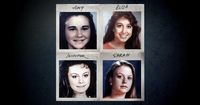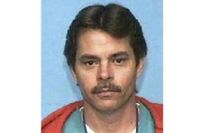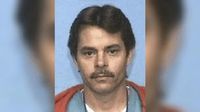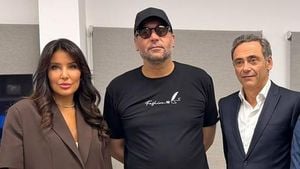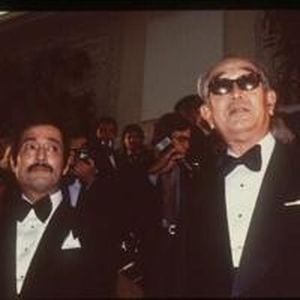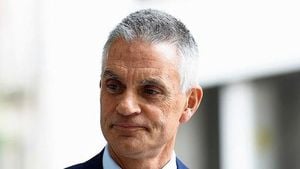For nearly thirty-four years, the city of Austin, Texas, has been haunted by a brutal crime that left an indelible scar on the community: the 1991 murders of four teenage girls at an "I Can't Believe It's Yogurt!" shop. Now, in a dramatic breakthrough, Austin police have identified the man they believe was responsible, thanks to advances in DNA technology and relentless investigative work that spanned decades.
On December 6, 1991, Amy Ayers, 13; Eliza Thomas, 17; and sisters Jennifer Harbison, 17, and Sarah Harbison, 15, were found bound, gagged, and shot in the head inside the yogurt shop where two of them worked. The perpetrator then set the building ablaze, destroying much of the physical evidence and compounding the horror for the victims' families and the city at large. According to The Associated Press, the crime scene was so badly damaged by fire that critical evidence was compromised, making the investigation even more challenging.
The brutality of the murders stunned Austin and quickly became one of the most notorious crimes in the city's history. Investigators were overwhelmed by thousands of leads, several false confessions, and years of frustration. In 1999, a new team of detectives revisited the case, and four men—Robert Springsteen, Michael Scott, Maurice Pierce, and Forrest Welborn—were arrested and charged. Springsteen and Scott, both teenagers at the time of the murders, confessed under police questioning, implicating themselves and each other. However, both quickly recanted, claiming their confessions had been coerced. Despite the controversy, they were convicted: Springsteen was initially sent to death row, while Scott received a life sentence.
But the saga didn’t end there. As Fox News reported, the convictions were eventually overturned on constitutional grounds. The Sixth Amendment guarantees a defendant’s right to confront their accusers, but during the trials, the confessions of Springsteen and Scott were used against each other without the opportunity for cross-examination—a clear violation. Before a retrial could take place, prosecutors decided to take advantage of a relatively new forensic tool: Y-STR DNA testing, which isolates male DNA in complex samples.
In 2009, Y-STR testing on evidence collected from the crime scene produced a partial male DNA profile that did not match any of the four men previously arrested. With this revelation, charges against Springsteen and Scott were dropped, and after nearly a decade behind bars, they were released. The shadow of suspicion, however, lingered over their lives for years.
Forensic science continued to advance, and so did the determination of Austin’s investigators. According to CBS Austin, the police department maintained a dedicated task force, supported by agencies including the FBI, to keep working the case. The public’s interest was reignited in August 2025 with the release of the HBO documentary series "The Yogurt Shop Murders," which brought renewed scrutiny to the unsolved crime.
The breakthrough came in September 2025. After painstaking work, investigators announced that DNA evidence had finally identified the source of the mystery profile: Robert Eugene Brashers, a man with a violent and disturbing criminal history. Brashers, as AP and Fox News detailed, was a convicted attempted murderer who had shot a woman in the head in 1985, served just three years of a twelve-year sentence, and was suspected of being a serial predator. He was linked by DNA to at least three other murders and a rape in South Carolina, Missouri, and Tennessee between 1990 and 1998.
Brashers’ violent spree ended in 1999, when he died by suicide during an hours-long standoff with police at a motel in Kennett, Missouri. According to CBS Austin, the gun he used to take his own life was consistent with a bullet casing found at the yogurt shop crime scene. His death, however, meant that there would be no trial and no opportunity for the victims’ families to confront him or hear answers to the questions that have tormented them for decades.
In a statement, Austin police emphasized the persistence of their efforts: "Our team never gave up working this case. For almost 34 years they have worked tirelessly and remained committed to solving this case for the families of Jennifer Harbison, Sarah Harbison, Eliza Thomas, and Amy Ayers, all innocent lives taken senselessly and far too soon. We have identified a suspect in these murders through a wide range of DNA testing. The suspect is Robert Eugene Brashers, who committed suicide in 1999."
Retired Austin detective John Jones, one of the original investigators, told CBS Austin that the connection between Brashers and the case was made through DNA. He added that the gun Brashers used in his suicide matched a casing found in the yogurt shop, providing further circumstantial evidence. Erin Moriarty, a correspondent for "48 Hours" who has covered the case from the beginning, reflected on the bittersweet nature of the news: "Think about this. Number one—Robert Eugene Brashers took his own life, so there's not going to be a trial. There will not be answers that I think the families had always wanted."
For the families of the victims and the men who were previously accused, the news brings a mixture of relief, sorrow, and unresolved pain. As Moriarty told CBS Austin, "I have spoken to one family member of a victim, and I think it's going to take a little while for people to process. The person I spoke to said that she didn't even quite know yet what to feel." She continued, "Let's think about also the four men whose lives over the last 30-plus years were tied to this. One was on death row. The other was serving a life sentence until their cases were overturned, and yet they have had that shadow hanging over their heads."
Despite the identification of Brashers as the likely perpetrator, the case remains open. Authorities have scheduled a news conference to share more details about the investigation and the evidence that led to this long-awaited breakthrough. The hope, as expressed by Moriarty, is that the advances in forensic science that finally unraveled the mystery of the yogurt shop murders will prevent similar tragedies from remaining unsolved for so long in the future. "It looks like if the Austin Police Department is correct, that science will have solved this case and that is very hopeful. That there won't be four little girls like this, that are murdered, and then their case, their murders, go unsolved. That should be the hope after a case like this. That science might be able to solve these cases so much faster, get the right people, get justice for these families. Let's hope this is really it."
As the city of Austin reflects on the decades of pain and perseverance, the revelation of Robert Eugene Brashers’ identity closes a chapter but leaves many questions unanswered. The hope now is that the lessons learned and the tools developed will bring justice more swiftly for others and offer some measure of peace to those who have waited so long for answers.
